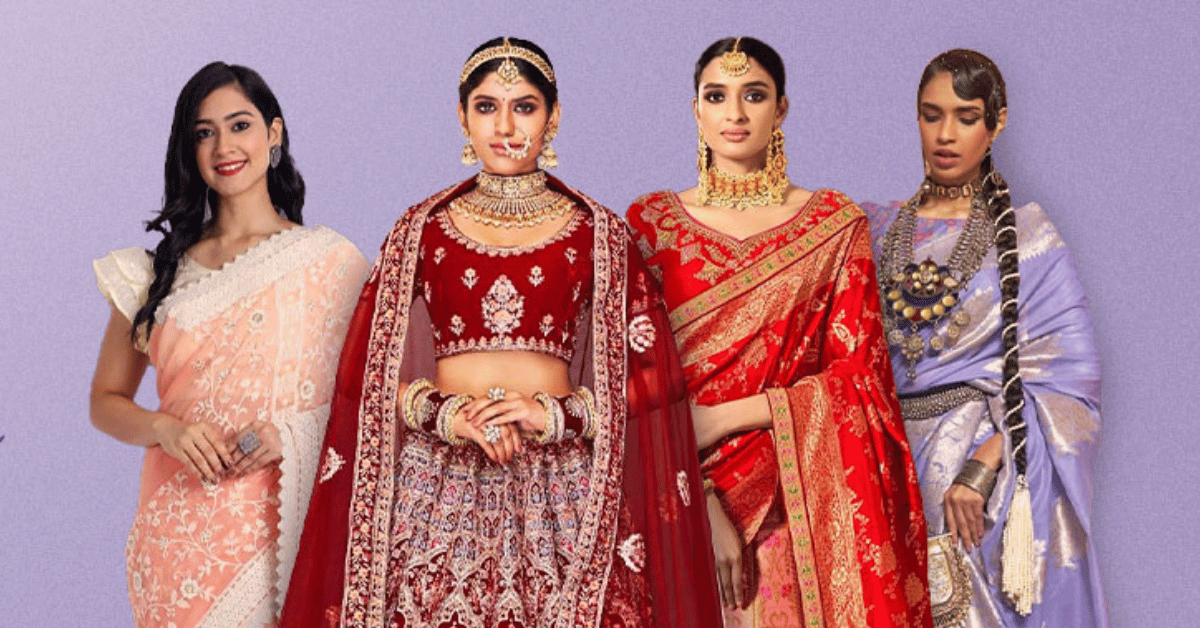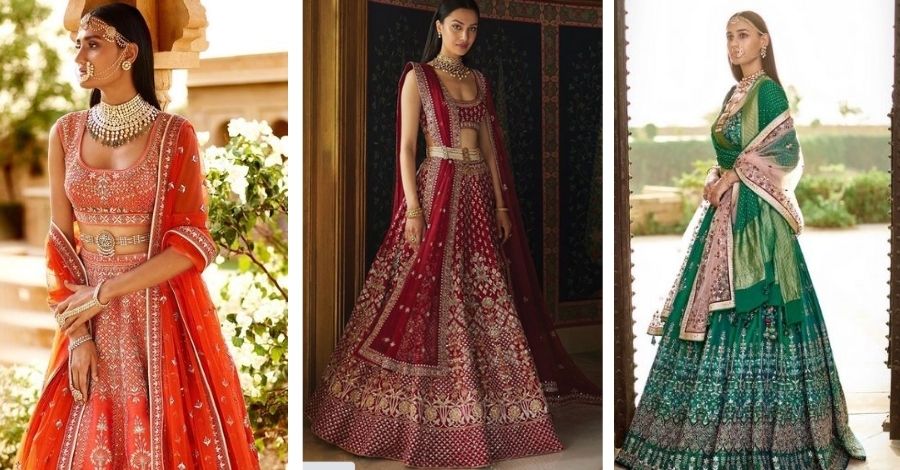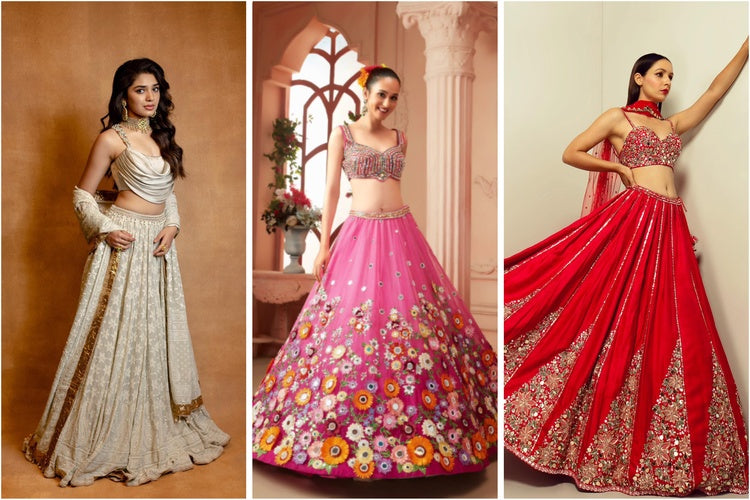
Saree Or Lehenga: What To Wear On Your Special Day?
Few items in the vast fabric of Indian culture more perfectly capture custom, grace, and joy than the lehenga and sari, which are worn at weddings. Indian brides have a particular place in their hearts for these classic outfits because they honor centuries of cultural legacy while expressing their own style.
Difference Between Lehenga and Saree
Bridal Lehengas
A flowing dupatta, a fitted blouse and a flared skirt make up the magnificent lehenga.
The height of luxury and magnificence, lehengas are embellished with elaborate embroidery, sequins, zari work, and priceless stones. They make brides into beautiful, confident, endearing goddesses. Because lehengas are so adaptable, brides can express themselves on them in a multitude of colors, textures, and styles. A velvet lehenga with its regal grandeur or a fusion design with its modern flair - the lehenga skillfully combines tradition and modernity. Its organized design also guarantees comfort of movement during different wedding rites and customs, enabling women to take part completely in the festivities.
Bridal Saris
A length of cloth draped elegantly and gracefully around the body, the sari is as classic as history itself. It is the core of Indian women and cuts across generations and geographic borders. A bridal sari represents culture, tradition, and femininity more than it does just clothing. From the opulent Banarasi silk to the delicate Kanjivaram, the sari captures the story of generations and the skill of weavers. Complete the bridal look with careful draping, elaborate pallu motifs, and ancestral jewelry—it's not just about the fabric. Because the sari is so flexible, brides can try out several draping looks that highlight the vividness of Indian textiles and workmanship.
Indian Weddings and Your Wedding Costume
In India, weddings are more than simply ceremonies; they are lavish events combining family get-togethers, religious rites, and cultural traditions. Both cultural background and personal preference can have a significant impact on the decision between a lehenga and a sari. In some areas, a bride's identity is inextricably linked to the sari, which stands for grace and purity. The lehenga, to others, stands for elegance and big parties. But when brides adopt hybrid looks that combine the grace of the past with current trends, the boundaries between tradition and modernity are becoming more blurred.
There is an innate capacity in both lehengas and saris to tell tales of identity, tradition, and love. As representations of a bride's path, they capture her decisions and personality. These garments elicit emotions that words cannot adequately express, whether they represent a bride's regal aspirations in a lavishly embroidered lehenga or her enduring cultural origins in a sari.
You can also read: Tips To Choose the Wedding Saree Of Your Dreams
How Do You Decide What To Wear on Your Wedding Day?
On your wedding day, you may decide to wear a lehenga or a sari based on your own cultural background, sense of style, comfort level, and general wedding theme or atmosphere. Traditional Indian clothing, such as lehengas and saris, is both charming and significant in its own right.
Regarding your decision, take into account the following:
Lehenga
Elegance and grandeur of Lehenga
Richness and magnificence are hallmarks of lehengas. They include a blouse, skirt, and frequently a dupatta (scarf) that is either contrasting or matching. On your wedding day, the rich materials, elaborate details, and heavy stitching might make you feel like royalty.
Comfort of Lehenga
Comparatively speaking, lehengas are typically easier to move around in than saris. Their clearly defined structure makes more mobility possible, which is advantageous for ceremonies, dancing, and other activities.
With a modern twist, lehengas combine tradition and innovation. They are available in a range of shapes, styles, and patterns, so you may select a look that complements your own style while still keeping close ties to your ethnic heritage.
Sari
Saris are a well-known, timeless style of clothing that Indian women have worn for centuries. They are grace, elegance, and sophistication personified. A well-draped sari can produce an amazing and unique bridal look.
Cultural Significance of Sari
Saris are extremely important to many Indian people culturally. They are representations of femininity, history, and custom. If cultural authenticity is important to you, a sari may be a better option.
Versatility of Sari
There are a ton of materials, colors, and styles available for saris. Saari drapes allow the artistic display of elaborate patterns, designs, and decorations. To get the right effect, try out many draping techniques.
Conclusion
On your wedding day, whatever you wear, whether it is a lahenga or a sari, the costume of your choice should ultimately represent your own tastes, degree of comfort, and wedding day vision. Should you be unsure between the two, you can think about wearing a little bit of each in your wedding dress. For the primary ceremony, for instance, some brides decide to wear a sari, then change into a lehenga for reception. Your wedding day is an occasion to celebrate your love and uniqueness; hence, whichever decision you make, you should feel attractive, comfortable, and confident.


